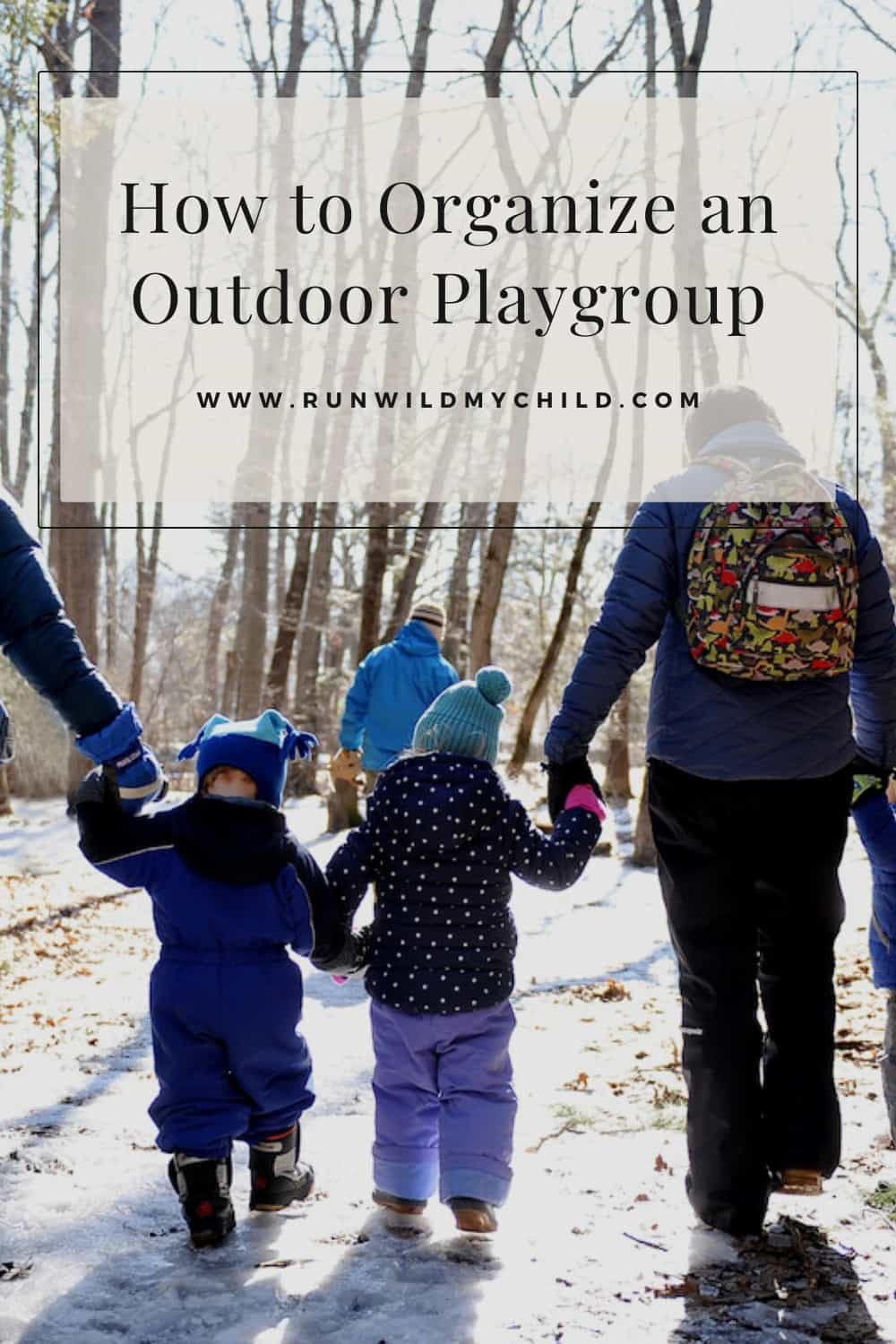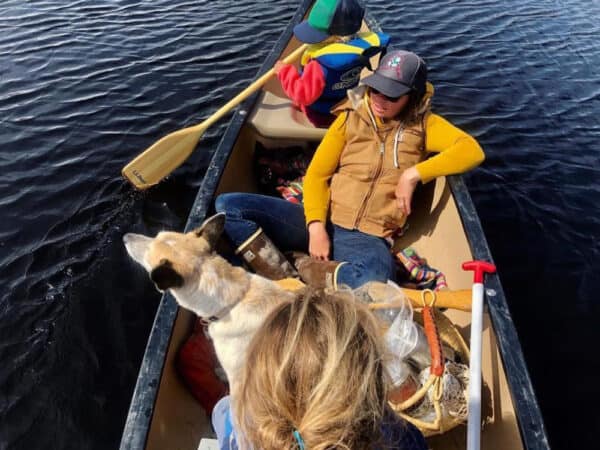There’s magic that unfolds when children run through grassy fields, climb trees, splash in creeks, and play under the open sky together with other kids. It’s magic that we, as parents, can nurture by organizing a simple yet transformative initiative: a weekly outdoor playgroup! Today, Courtney Cronin of Wild Migration Family, is here sharing her experience organizing a weekly outdoor playgroup. In this post, Courtney explores the profound impact of outdoor playgroups on childhood, community bonds, and the experience of motherhood. She’ll delve into the benefits of outdoor play, the role of community in child rearing, and how mothers can find support and fulfillment through these groups. Moreover, she’ll guide you through the steps to create your own playgroup and address common challenges.
The profound impact of an outdoor playgroup
When my kids were young, starting an outdoor playgroup was one of the best decisions I ever made. At the time, I had no idea the impact it would have on my young family’s life, in how we related to each other, our community, and the natural world around us. Eight years later, and I fondly remember the days spent with our playgroup as some of the most magical of my kids’ early childhood. I would not be the person, mom, or community member I am today if it were not for that group. In this post, I hope to show you how profound a simple little outdoor meet-up can be on you, your family, and your greater community.
Benefits of outdoor play
We probably all know that outdoor play is more than just a fun pastime; it is a vital component of a child’s development. Spending time outside playing fosters physical health and well-being. When children engage in outdoor activities like running, jumping, climbing, and hiking, they develop strength, agility, and coordination.
Exposure to natural light also helps regulate their sleep patterns (because who doesn’t want kids that sleep better?!) and boosts the production of essential vitamins like Vitamin D, contributing to overall physical health. Moreover, outdoor play encourages kids to explore the world around them, enhancing their spatial awareness and fine motor skills through activities like digging, building, and exploring nature.
Beyond the physical benefits, outdoor play is a cornerstone of child development. It stimulates cognitive growth as children engage with their environment, problem-solve, and develop their creativity. In outdoor settings, children are free to use their imagination, creating games and stories that enhance their critical thinking and social skills. Interactions with friends and peers in outdoor settings foster important social skills, teaching them how to share, communicate, and collaborate. Furthermore, the sense of wonder and curiosity that outdoor environments provide can spark a lifelong love for learning and a deep connection with the natural world.
Equally important, outdoor play encourages mental well-being by reducing stress and anxiety, boosting mood, and offering a respite from the pressures of academics and technology.
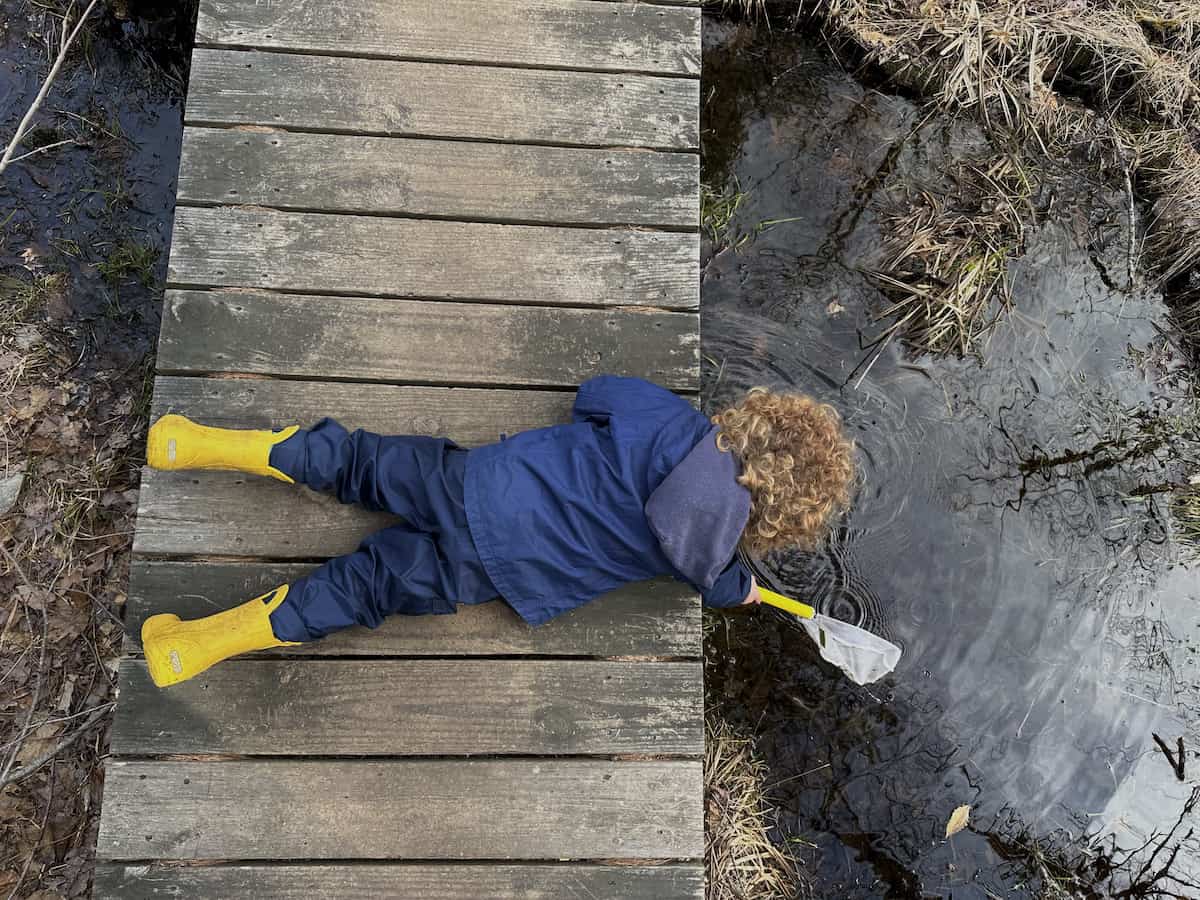
What is an outdoor playgroup?
Have you ever heard of an outdoor playgroup? Do you know of any in your area? Have you ever thought of organizing one?
Let’s start with the basics. An outdoor playgroup is a regular gathering of children and parents or caregivers in outdoor settings, providing an opportunity for kids to engage in active play, explore nature, and socialize while fostering a sense of community among families.
Benefits of outdoor playgroups
Outdoor playgroups serve as nurturing grounds not only for children’s growth but also for the development of strong and interconnected communities. These playgroups provide children with the opportunity to interact with peers from various backgrounds, fostering tolerance and empathy from a young age. The shared experiences of outdoor adventures and playful escapades create a sense of camaraderie and belonging among children, helping them build friendships that often endure throughout their lives. These bonds can be especially meaningful in today’s diverse world, where understanding and acceptance of different cultures and perspectives are crucial.
However, the community-building aspect of outdoor playgroups extends beyond the children themselves. The parents (usually moms), who often organize and participate in these groups, also find themselves forming deep connections with other parents. These relationships can offer a lifeline in the sometimes isolating journey of motherhood. Sharing parenting experiences, advice, and the ups and downs of child-rearing creates a strong support system. Moreover, the time spent together during playgroup meetings often evolves into lasting friendships that extend beyond the playgroup itself. These bonds strengthen the community fabric, creating a network of support and resources that enriches the lives of both children and mothers.
Getting the group started
Inspired by one of my best friends who was involved in starting a Forest School on Orcas Island, I wanted to start something similar (but with more parent involvement and less structure). I put the word out across some community pages on Facebook about a “Forest Playgroup” and organized our first adventure and meet-up. At the time, I wasn’t sure if anyone would be interested or even show up.
To my amazement, a dozen families showed up that first week, and it was a smashing success. The kids got along, the parents got along, and we all went home exhausted and happy! Week after week, the playgroup kept growing in numbers. Clearly, I wasn’t the only one who craved community and loved spending time outdoors with my kids!
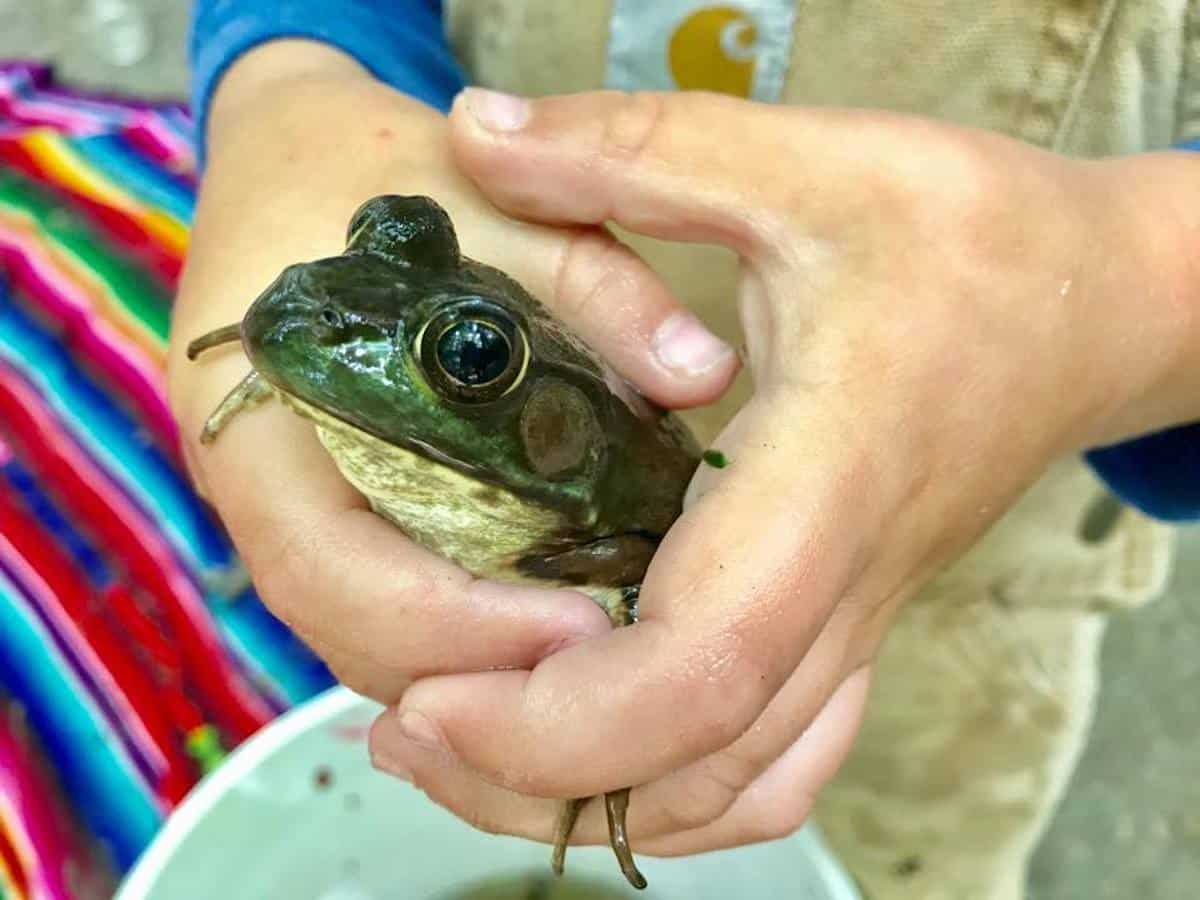
Organized chaos
We were organized, but that doesn’t mean it wasn’t still chaotic at times. Our group got together every Friday– rain, snow, or sunshine. We showed up at 9:30 a.m. (toddler time) and often rolled home just as it was time to start making dinner.
On any given playgroup day, there would be upwards of 50 families that would seemingly take over a local beach or trail. We’d be an entangled explosion of kids, moms, gear, and snacks in every direction. Outsiders surely couldn’t decipher who was with whom, as we all took on a collective role of family– caring for each other’s boo-boos, distributing snacks, or tending to needs as if each child were our own.
Community parenting
I’m not exactly sure how it happened, but at outdoor playgroup, there was an unspoken rotation amongst the moms “on watch” as others were finally able to engage in a conversation lasting more than just a few words. The kids, rightfully so, were living their best lives and absolutely thriving. It was a “yes” environment, supporting kids in following their natural curiosity as they played, learned, and explored alongside kids their own age and parents alike.
It was also a culture that supported positive parenting. Instead of commiserating over lost sleep or toddler meltdowns, we were celebrating the joys and hilarity of watching our kids learn to navigate rooty trails and social dynamics. It was so much easier to focus on the good and the funny when you were outside, in the fresh air, among friends.
The parents spoke with patience and kindness. We showed each other (and the kids) support and gave lots of praise and encouragement. It set a tone for how we related to each other, to our kids, and even to ourselves.
Setting expectations
Outdoor playgroup day (Friday), was the one day of the week where plans were set in stone for us. We may not have known exactly what we could expect on each outing, but we knew we’d be with friends and outside all day. That’s all we needed to know to prepare. We’d fill our backpacks to the brim with snacks of all kinds, water bottles galore, and lots of layers for whatever the weather would be. We’d leave the explosion of our house in our wake and spend the whole day outside, not caring a bit about the mess waiting for us upon our return.
Naps happened under trees or on our backs. Lunch was often layered with dirt and sand. New friends were welcomed, and old friends were cherished. Critters were caught, trees were climbed, and miles were hiked.
Each week, I knew that outdoor playgroup would be the reset and reinforcement I needed to maintain both my intention and sanity as a mother. We were a community, outside, and we all were thriving.
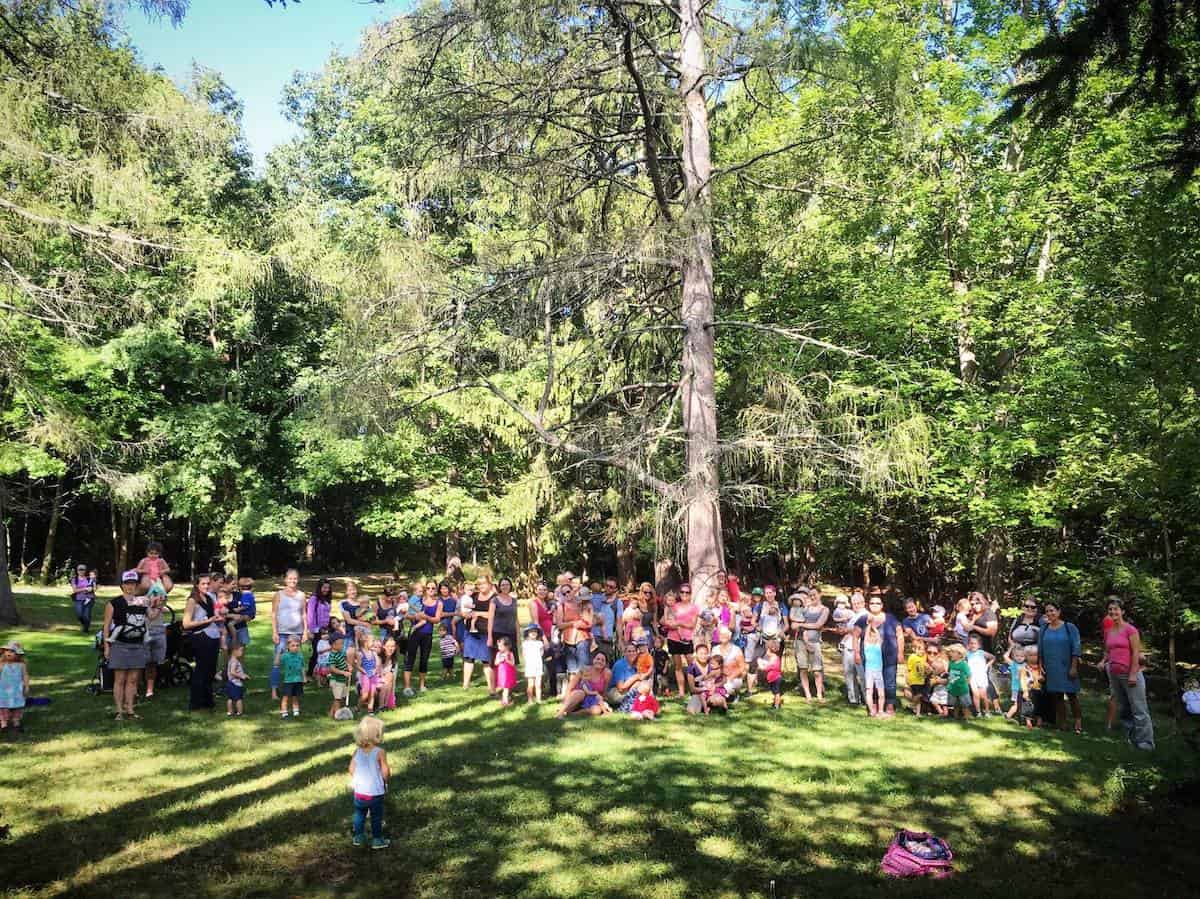
Becoming a community
When we started our outdoor playgroup, I had no idea what it would become and how it would shape who we are as a family. I had no idea I would spend nearly every day outside with my then toddler and infant daughter, exploring nature around us. I didn’t realize how much I was craving community and connection with others (for them and for myself).
What started off as meeting up for a walk in the woods grew into a network of 5 playgroup branches in Maine, engaging upwards of 100 families in weekly adventure and reaching well over 8,000 families across the state. I was blown away, and still am, by the impact this little “wish for community” had on my family and my community.
Nearly a decade later, our Maine-based Forest Playgroup is still going strong. I’ve transitioned from overseeing toddler tree climbers to supporting new families in taking the reins. After seeing the impact of it on my own family, I’m even more passionate about supporting others in creating it for theirs. In this post, you’ll find what I believe are essential steps in getting a group off the ground.
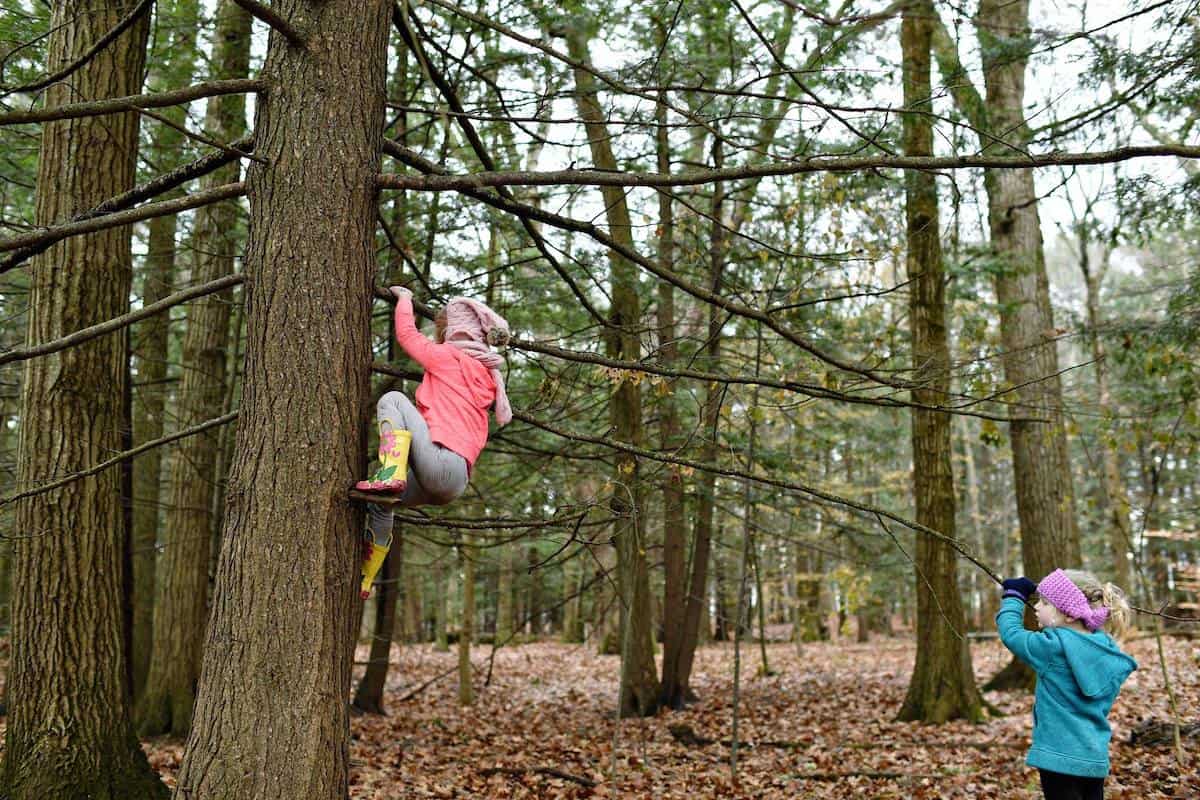
Photo by Emily Griffith
How to establish a schedule for your outdoor playgroup
Establishing a schedule for your playgroup will help it grow and thrive. Be realistic with what you can organize and manage so that it can be consistent week after week. Your group will lose momentum if you have to cancel too many times, or if you don’t meet regularly enough to integrate into people’s schedules.
I found that meeting once a week at the same time allows people to plug it into their schedule, and therefore allows your community to be consistent and grow.
Be mindful of changing weather conditions, daylight hours, and seasonal activities. If necessary, you can adjust the schedule to accommodate these factors, so the playgroup remains enjoyable year-round. And while consistency is essential, allow some flexibility for occasional changes due to unforeseen circumstances or special events. Make sure participants are aware of the flexibility in advance.
Plan a mix of structured and unstructured activities to keep children engaged. Consider nature walks, scavenger hunts, games, and free play. Incorporate a designated snack time into your schedule, encouraging social interaction among children and providing a break for parents to chat.
Choosing a location for an outdoor playgroup
One of the best parts of organizing an outdoor playgroup is getting to know the magical outdoor areas in your own backyard. I can bet there are way more trails in your area than you think, and adventuring with your playgroup each week will act as an impetus to get you to them. AllTrails is a fantastic resource for locating local trails, or try contacting your local land trusts for suggestions.
From there, you have to decide whether or not your playgroup will meet at a new location each week, or decide to sink into a place a bit more and host a handful of consecutive adventures at each location– both approaches have their advantages.
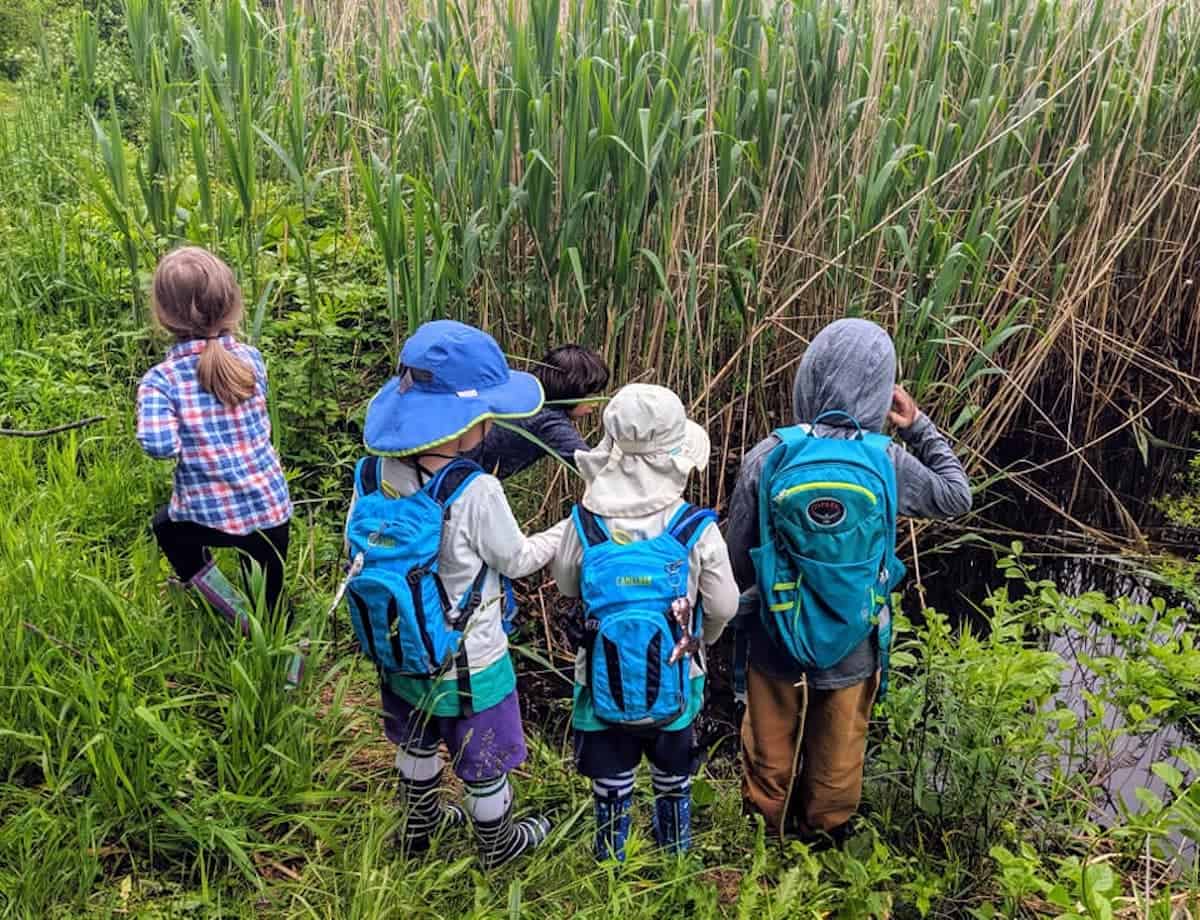
Getting the word out about your outdoor playgroup
Believe it or not, this is one of the easiest parts of organizing a playgroup. The one (and debatably only), benefit of our social-media-crazed culture these days is the fact that there is a quick and simple way to spread the word about initiatives like these.
Join your mom and community groups on Facebook and generate a post that speaks to the intention of your group. Be sure to include a photo and link to either your playgroup’s Facebook group, newsletter, or website, where people can sign up to receive invites. You could also design a flyer with a QR code to hang in your local library or other community hot spots for those who aren’t on social media.
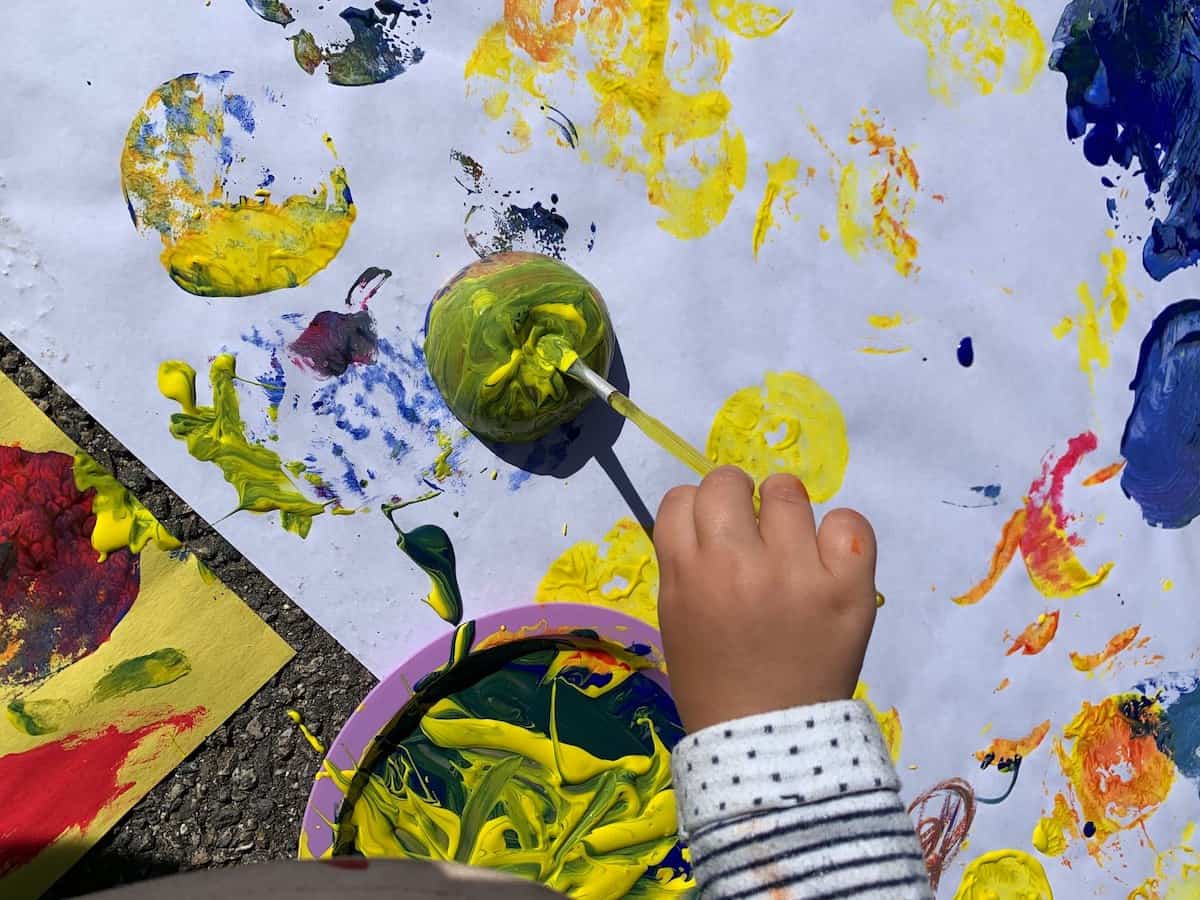
Communication is key
Clearly communicate the start and end times of each playgroup session, as well as the location and any information that people may need to know about the location (such as parking, etc.). In advance of the meet-up, make sure that all participants are aware of any safety guidelines and what they may need or should bring (e.g. sunscreen , lifejackets, water/snacks, first aid, water shoes, snow boots, etc.). Safety should be a top priority during outdoor play.
You can keep the lines of communication open with playgroup members through email, social media, or a group messaging platform. Share the schedule in advance, remind participants of upcoming sessions, and provide any updates or changes promptly.
If you’re going to be hosting an adventure every week, don’t create the need to reinvent the wheel every time. Create a template for your invites (announcements) and any post-adventure recaps. Templates make it easier for the audience to follow along, know what to expect, and for others to jump into facilitator roles.
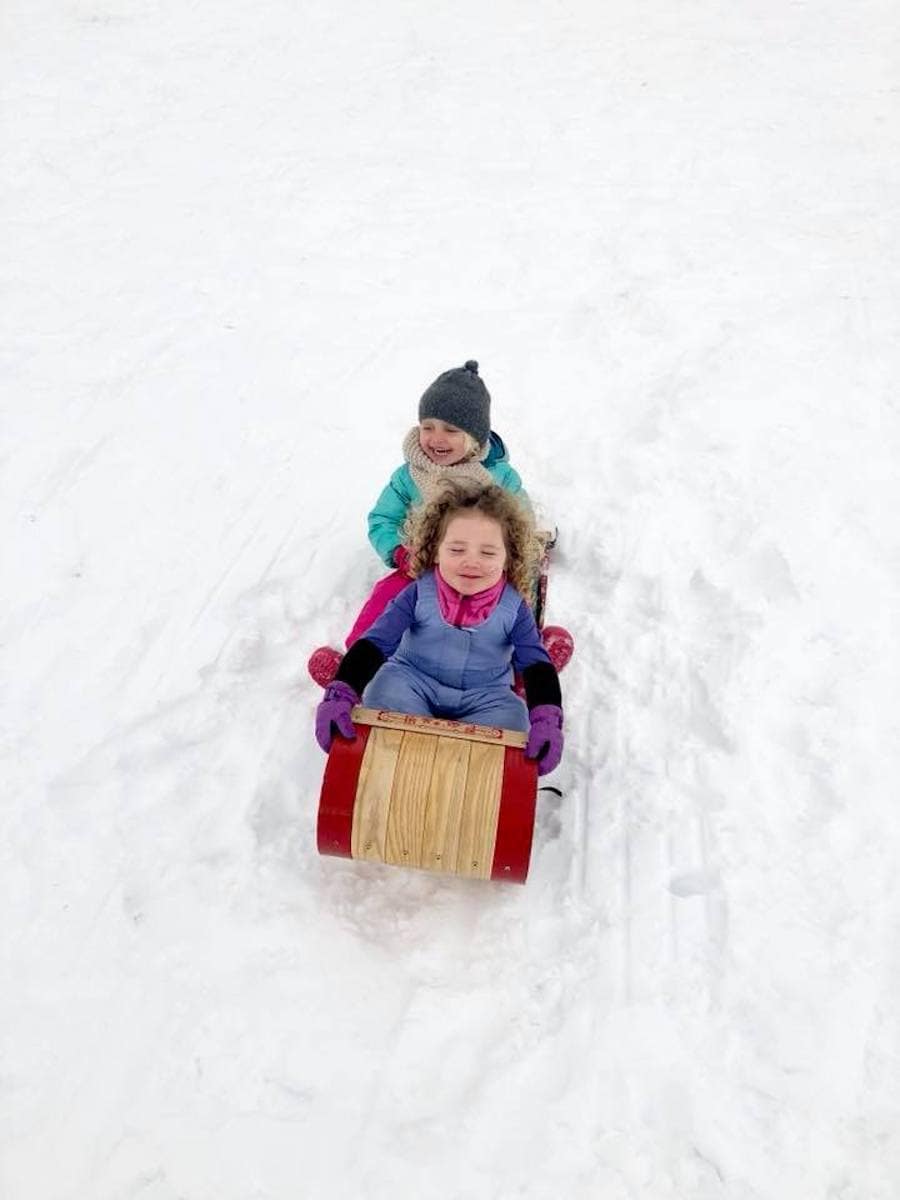
Post adventure sharing
Not everyone can or maybe doesn’t yet want to participate in every adventure, but you can still help them feel included by sharing a post-adventure recap. This draws new people in and makes folks who regularly attend feel a part of your community. Share some sweet moments from the outing and photos you want to remember. This will continue to set a positive tone for the culture of your group and show new members what the outing looks like and what they can expect.
Post-adventure recap example:
“You sure can’t beat a good, old-fashioned day at the beach. FIFTY ( yes, 50!!!!) families packed Kettle Cove Beach yesterday for some fun in the sun on our 24th adventure. From splashing through the tropical-looking water to creating stellar seashell necklaces, and jumping off low bridges into the squishy sand, the kids had a blast. Week after week, we are blown away by the ease of community that joins us for these adventures. We look forward to seeing you all next week for some hiking!”
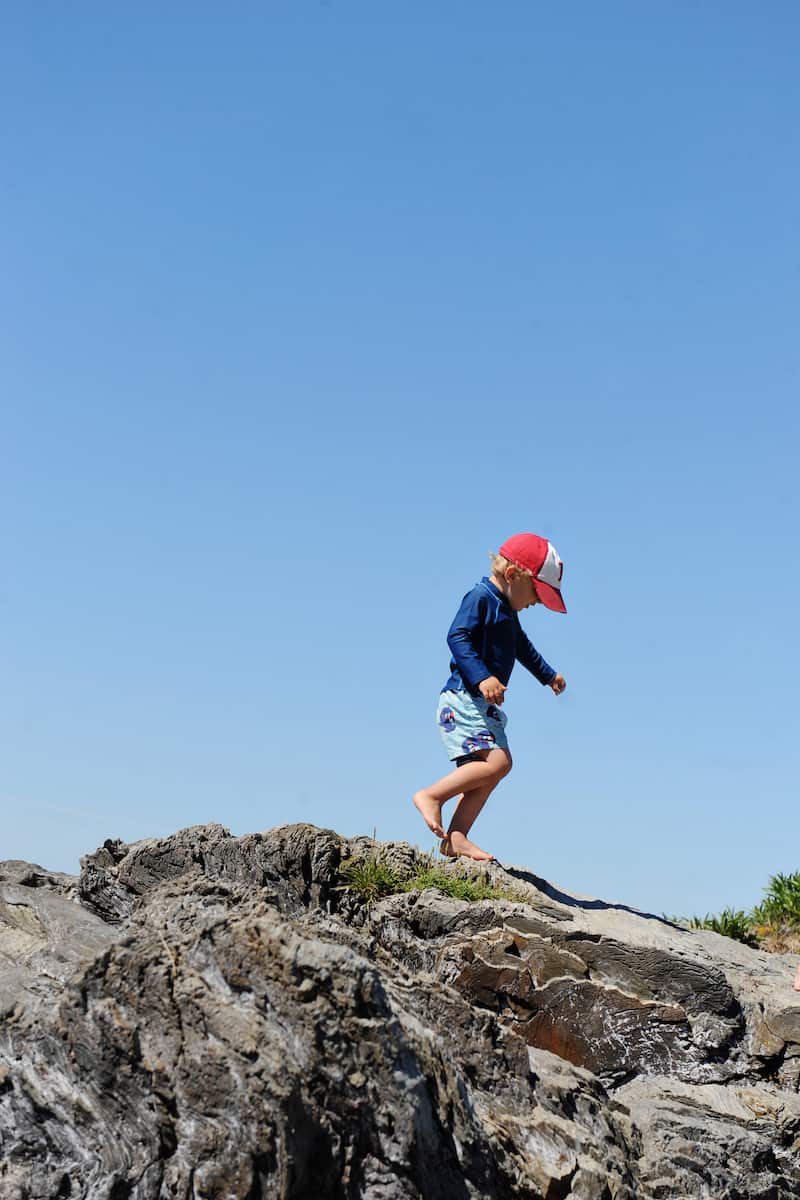
photo by Emily Griffith
Creating group culture
One of my biggest motivations in starting an outdoor playgroup was to find “my people” and to be a supportive community for others. Parenting young children can be lonely and isolating. We all want, and NEED, community, but finding it can at times feel impossible and overwhelming.
Organizing an outdoor playgroup was more than just getting a group of people together outside; it was setting a tone for how I wanted to parent, how I wanted to be in my community, and how I wanted my kids to be involved and engaged (with other children, adults, and nature).
As the organizer, I knew that I needed to set a positive and respectful tone by demonstrating kindness, inclusivity, and patience in my interactions with group members. I tried to emphasize the importance of kindness, sharing, and treating others with respect. I made an effort to include everyone and introduce newcomers to the group. It was also important to me to stress that the playgroup is a safe space where everyone is accepted for who they are. You can encourage parents to share their parenting challenges and successes without fear of judgment.
We all want to be the best for our kids and want to be surrounded by others who inspire us. Naturally, we all have hard days and nights and take comfort in knowing that we aren’t alone in our struggles, BUT mental health also requires us to celebrate our successes, joys, and adventures of parenting. Positivity abets positivity, so being surrounded by thoughtful, heartfelt parents with similar passions and priorities allow us to live with greater love, compassion, and intention. And it all trickles down from there.
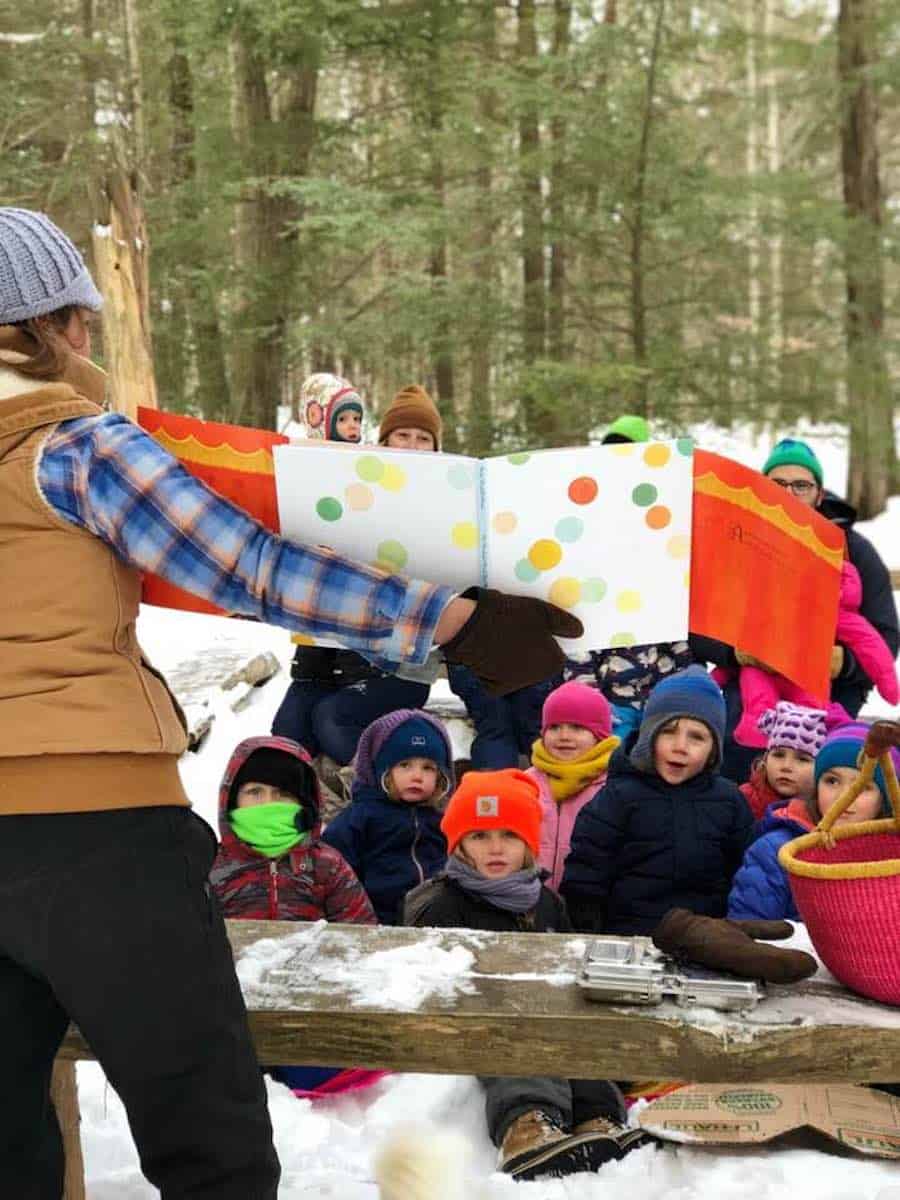
Be an all-weather adventurer
Weather builds resiliency, but can also, understandably so, be challenging– for children and adults alike. That said, I think some of the most magical moments outdoors can be when you’re surrounded by so-called “bad weather” (e.g. falling rain, snow, and wind). The natural world comes alive in a different way in different weather conditions, and it’s pretty special for kids to be able to experience that while simultaneously experiencing the effects it has on them.
If you want your playgroup to meet year-round in all weather conditions, consider having some structure to your adventures. A simple activity and story time can act as an impetus to get kids out of their parents’ arms and out exploring.
Furthermore, activities help engage, both kids and parents alike, when the weather is “dynamic”. Some days can be the perfect trifecta– perfect weather, perfect energy levels, perfect location, and those days you realistically could show up somewhere and, like magic, it’s an out-and-go experience– everyone is engaged, happy, and off exploring.
However, other days it’s pouring down rain and the trail is literally a stream of mud. Without an activity, people are going to wonder what the heck they are doing standing in the woods and their discomfort will completely overwhelm them. Few adults or kids will willfully play when it’s dumping snow or pouring rain, but many will if it feels like there is a bit of purpose.
A little rain painting activity or snowflake investigation can go a long way, for everyone involved. Having a consistent structure, throughout the easy and difficult weather days, will help keep participation consistent.
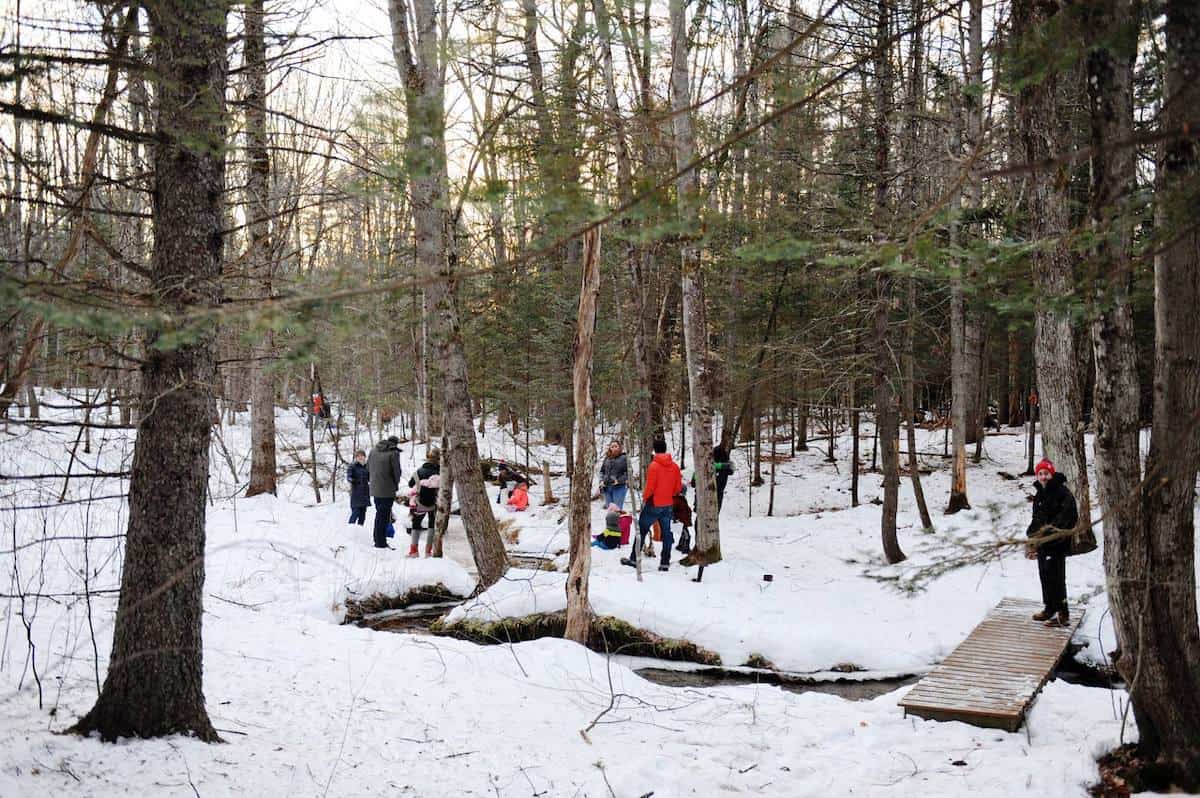
Photo by Emily Griffith
The importance of being free
There’s something really powerful about running a free program that families don’t have to pay to be a part of. Firstly, it promotes inclusivity and accessibility. By eliminating the financial barrier of entry, you ensure that families from diverse socioeconomic backgrounds can participate. This inclusivity fosters a sense of unity among families from all walks of life, breaking down social and economic barriers and providing children with the opportunity to interact with peers they might not otherwise meet. This diversity enriches the playgroup experience, exposing children to a wide range of perspectives, cultures, and experiences, promoting tolerance and empathy from a young age.
Secondly, a free outdoor playgroup reduces stress for parents. Parenthood can be financially demanding, and by offering a cost-free playgroup, you alleviate some of the financial burden on families. Parents can enjoy the benefits of outdoor play and community bonding without worrying about additional expenses. This, in turn, creates a more relaxed and enjoyable environment, allowing parents to focus on building connections and making lasting memories with their children.
A free playgroup also makes it so people are involved in creating an experience rather than expecting one. This sets the tone for the culture of your group, the participation, and the shared responsibilities. Making the group free means that the participating families are the ones making the decisions and setting the tone. When people feel responsible for something, they are much more likely to feel more positive about it, will actually show up and share it with others, and will be more likely to be involved and invested in keeping it going.
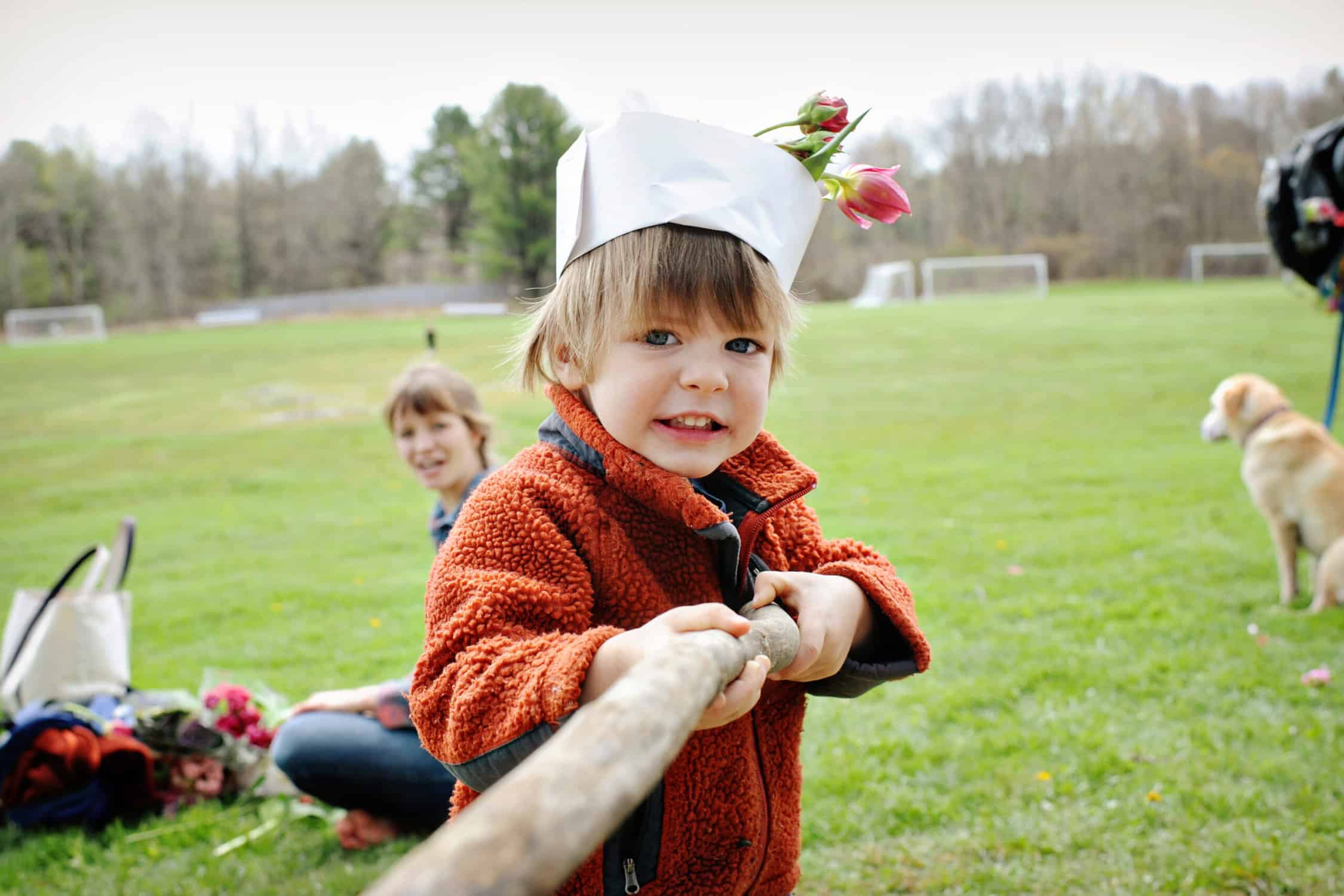
Photo by Emily Griffith
Share responsibilities
A successful playgroup cannot be a one-person show. Sharing responsibilities is essential, as it lightens the load on the organizer and fosters a sense of community ownership. It takes a village to create a village. When starting a playgroup, try to recruit at least a couple of other friends/parents that you can share the responsibilities with. You can also identify the specific tasks required to run the playgroup smoothly, and split responsibilities up this way. These tasks may include scheduling meet-ups, organizing activities, communicating with members, choosing themes and locations, and ensuring safety measures.
As your playgroup grows, you can loop in the families that attend regularly and ask them to sign up to host or help out with different aspects of the meet-up. From my experience, having at least a couple of “leaders” to oversee involvement is crucial, and having a streamlined system for managing involvement makes it painless. Once you have a clear list of things you could use help with, reach out to group members and encourage them to take on specific roles based on their interests and skills.
Create a shared calendar or schedule to allocate responsibilities, ensuring that everyone has a clear understanding of their role and commitment level. Regularly check in with participants to see if there are questions or if anyone needs help. By dividing the workload and involving others, you create a sense of shared responsibility that strengthens the playgroup’s sustainability and effectiveness.
A simple Google spreadsheet that outlines the adventure date, location, facilitator, and theme works great! Tracking participation in that same spreadsheet also helps you see your growth!
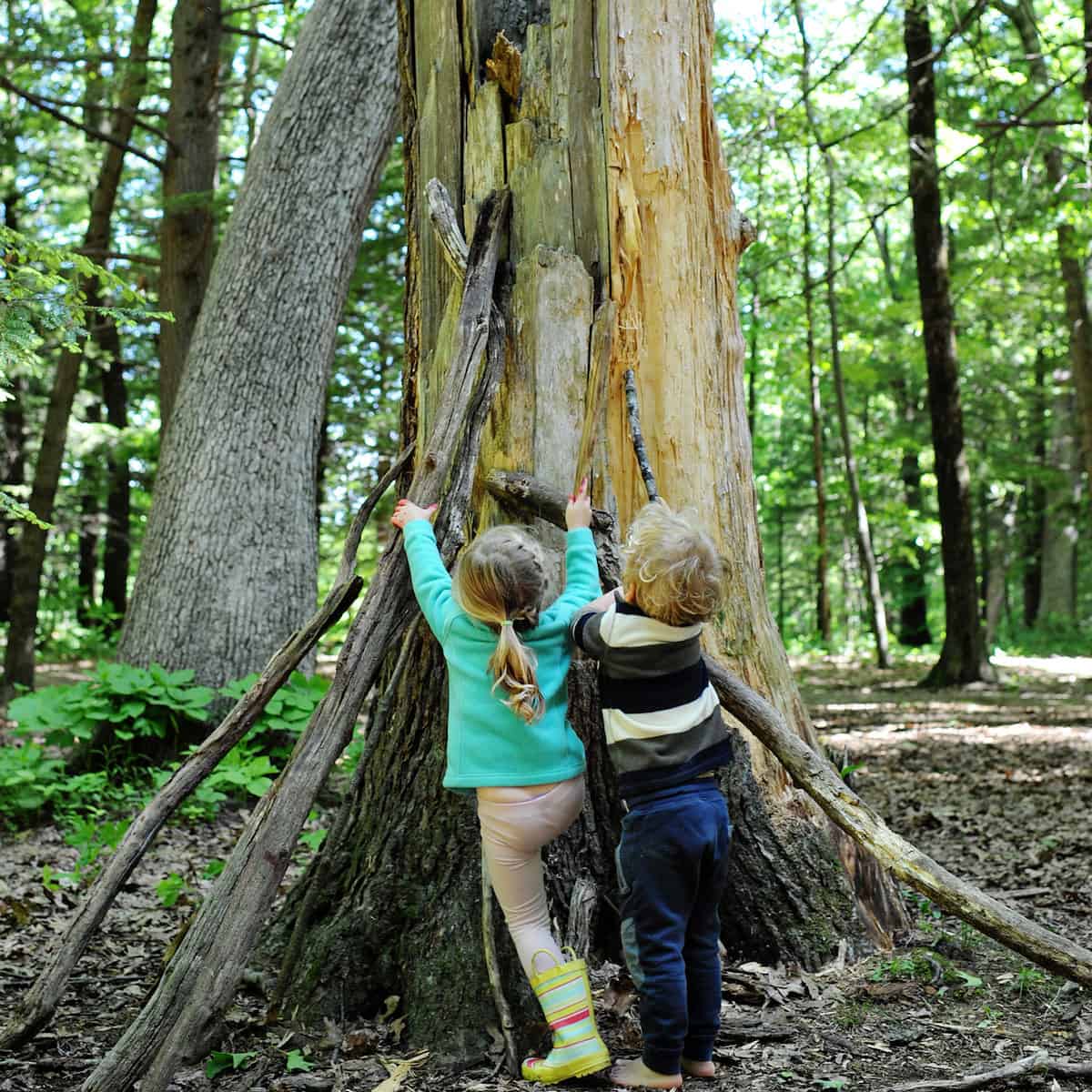
Photo by Emily Griffith
Consider local partnerships
As your playgroup grows, you may want to consider partnering with local land trusts, businesses, parks, conservation areas, farms, or other organizations that share your mission of getting families outside exploring. We have partnerships with local land trusts, and they sign up to “lead” an adventure. This allows them to showcase their properties and their organization’s programs, often leading to an increase in membership.
You can begin by initiating conversations with these entities to discuss potential collaborations. Local parks and conservation areas, for instance, may allow your playgroup exclusive access to certain areas or provide guided nature walks led by their experts. Farms can offer educational tours, showcasing sustainable agriculture practices and connecting children with their food sources. By working hand in hand with these organizations, your playgroup can offer a wider array of enriching outdoor experiences, inspiring a love for nature and exploration in children.
Additionally, local businesses can become valuable partners. Outdoor gear retailers may be willing to provide discounts or donations of equipment for playgroup activities, making it easier for families to access quality gear. Restaurants or cafes with outdoor seating can become meeting points after playgroup sessions, creating opportunities for socializing and community building among parents. These businesses can benefit from increased patronage from playgroup members, creating a win-win situation where the community and local enterprises support each other in promoting outdoor play and bonding.
You can also look for local experts to come chat with your group about their topic of expertise. Maybe a local birder could help the kids spot and identify birds, or a local gardener can help the kids identify plants.
Building these partnerships takes proactive outreach and effective communication of your playgroup’s goals and values. Collaborations can not only enhance the outdoor experiences you offer but also create a sense of interconnectedness within your community, promoting the shared mission of getting families outside to explore and connect with the natural world.
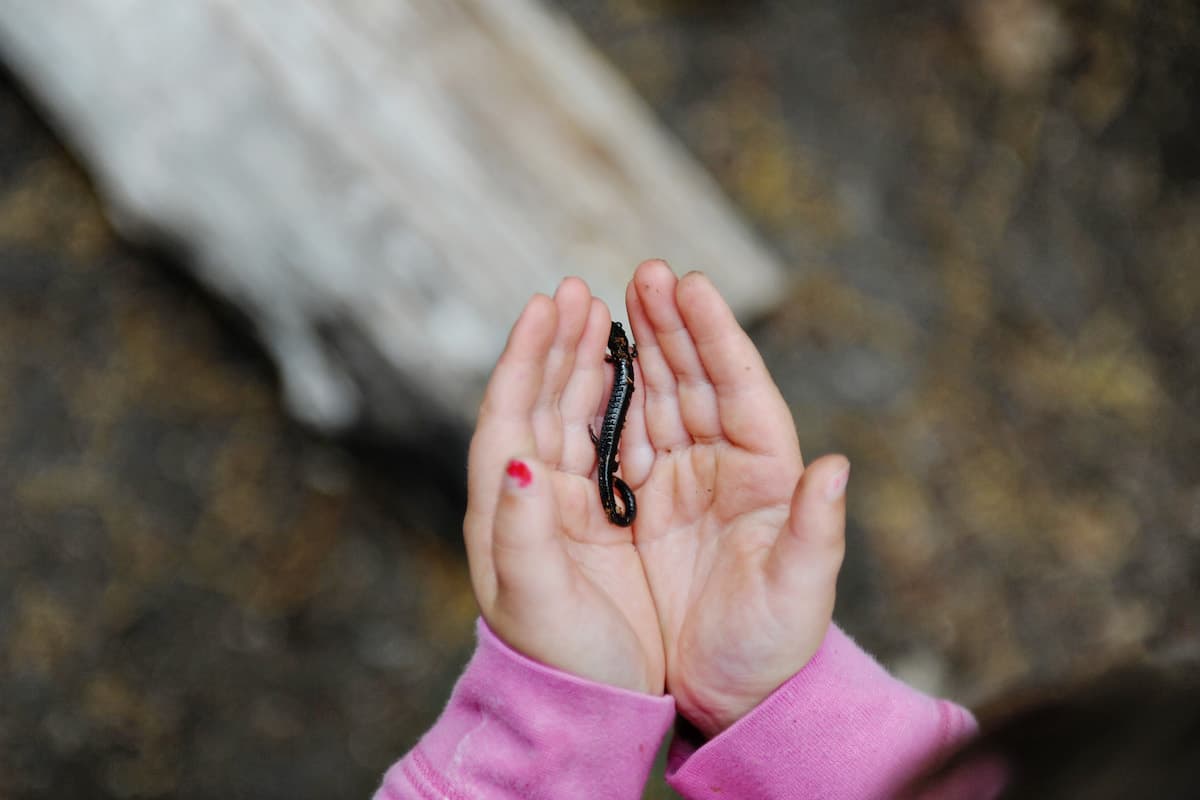
Photo by Emily Griffith
That dream community is possible!
So, if you’re ready to reconnect your children with nature, strengthen your community ties, and discover the joys of motherhood in a supportive network, starting an outdoor playgroup might be the solution you’ve been looking for. It’s a journey that promises not only to change the lives of our children but also to shape a brighter, more connected future. The community we all dream of isn’t far out of reach. It starts with something as simple as an invitation to go outside. Take the leap; you may be amazed at what comes from it.
Have you ever considered starting an outdoor playgroup?
About the author
Courtney’s the homeschooling mother of two wild and kind kids, the founder of 2 non-profit organizations, an avid traveler, and a passionate experiential educator. She has spent the better part of the last two decades traveling around the US and Central America – first as a part of her traveling high school, where she lived out of a converted school bus and slept in tents every night for 4 years, and, more recently, traveling with her family – from following animal migration routes to Mexico to fishing in Southeast Alaska. Rooted in Maine, she is passionate about immersive education.
When not on the road with her family, she is busy organizing educational immersives, from tapping maple trees to tagging Monarchs and facilitating outdoor adventure programs, from hiking to ice fishing. Whether hauling lobster traps or monitoring salamanders, she works to make learning fun, engaging, and interactive. She’s excited to share her love for nature, travel, and outdoor adventures with the Run Wild My Child community.
You can find more from Courtney online in the following locations:
Instagram: @wildmigrationfamily
Website: Wild Migration
RWMC posts: Courtney Cronin

